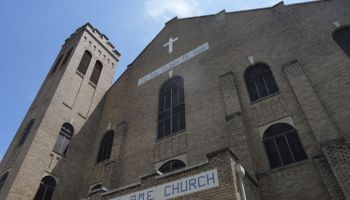The area of the country that’s already gotten a bad rap as the “stroke belt” now has another black-mark moniker to add to the list: the “diabetes belt.”
Researchers from the Centers for Disease Control and Prevention say the southeastern United States earned the latest nickname based on data they collected in 644 counties to determine where Americans have the highest risk of the disease.
Nearly 12 percent of people living in the “diabetes belt” have the condition, characterized by the abnormal production of blood sugar, compared with 8.5 percent in the rest of the U.S. Currently, about 26 million Americans have diabetes, according to the American Diabetes Association.
“We have known for a long time that diabetes was more common in the Southeast than it was in the rest of the nation, but in many ways that’s not an adequate definition,” said the CDC report’s lead researcher Lawrence Barker, according to Reuters.
Barker and his colleagues analyzed national health studies and used that data to create a map of the country with the diabetes rates for each region.
The CDC’s report in the American Journal of Preventive Medicine, which provides more specific, detailed information about who has diabetes and where they live, “allows us to identify areas where the need is greatest and where we can direct our attention and efforts to prevent and control diabetes,” explained Barker.
The analysis brought a clear pattern to light: 15 different states had at least some pockets with especially high rates of diabetes, according to Reuters. Those states include Alabama, Arkansas, Florida, Georgia, Kentucky, Louisiana, North Carolina, Ohio, Pennsylvania, South Carolina, Tennessee, Texas, Virginia, West Virginia and all of Mississippi.
People living in that swath of the country were more likely to be obese and lead an inactive lifestyle than those from other parts of the U.S., the study showed. Those factors contributed to nearly a third of the difference in diabetes rates within the diabetes belt versus outside it, according to Reuters.
There were also more residents who were African American and over 65, both risk factors for the disease. But even younger, thinner Southeasterners had a higher chance of diabetes than those who lived elsewhere.
“We suspect there are cultural factors that are very hard to measure — for example, traditional diet [or] attitudes toward seeking medical care,” Barker said.
High diabetes risk showed up in isolated counties in other states, but the problem wasn’t as widespread in those areas, so the CDC didn’t include them.
The yearly cost of treatment is estimated at more than $100 billion. Diabetes sufferers are also more prone to other health problems like kidney and heart disease and certain types of cancer.
The diabetes belt has many states and counties in common with the previously classified stroke belt and heart failure belt, Reuters said.
source: The Belle Report















